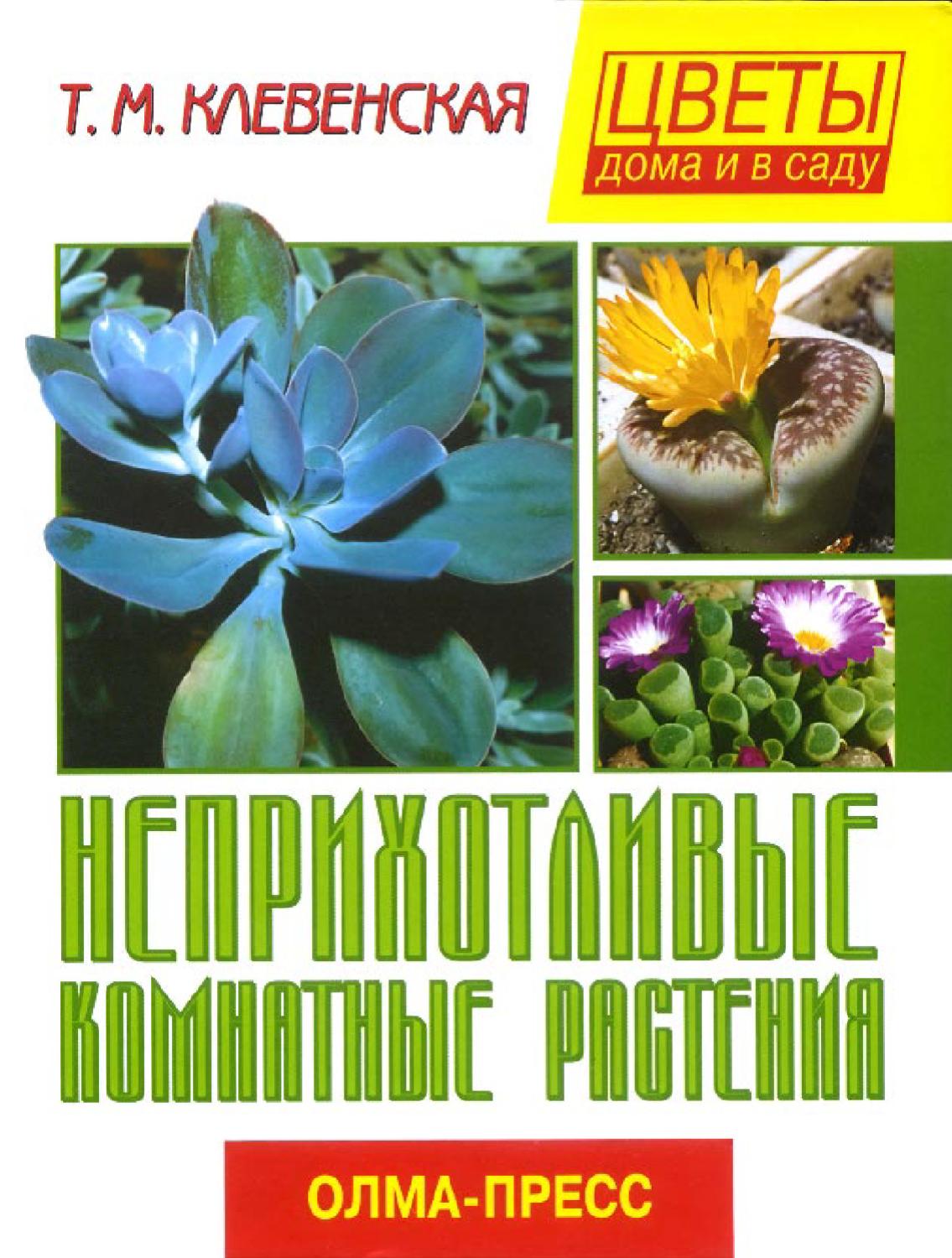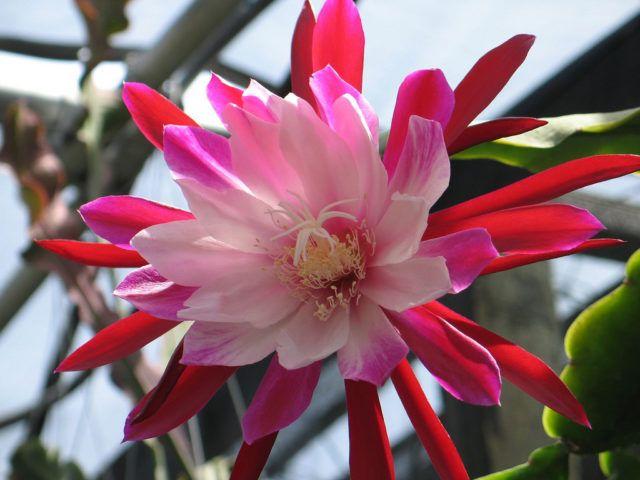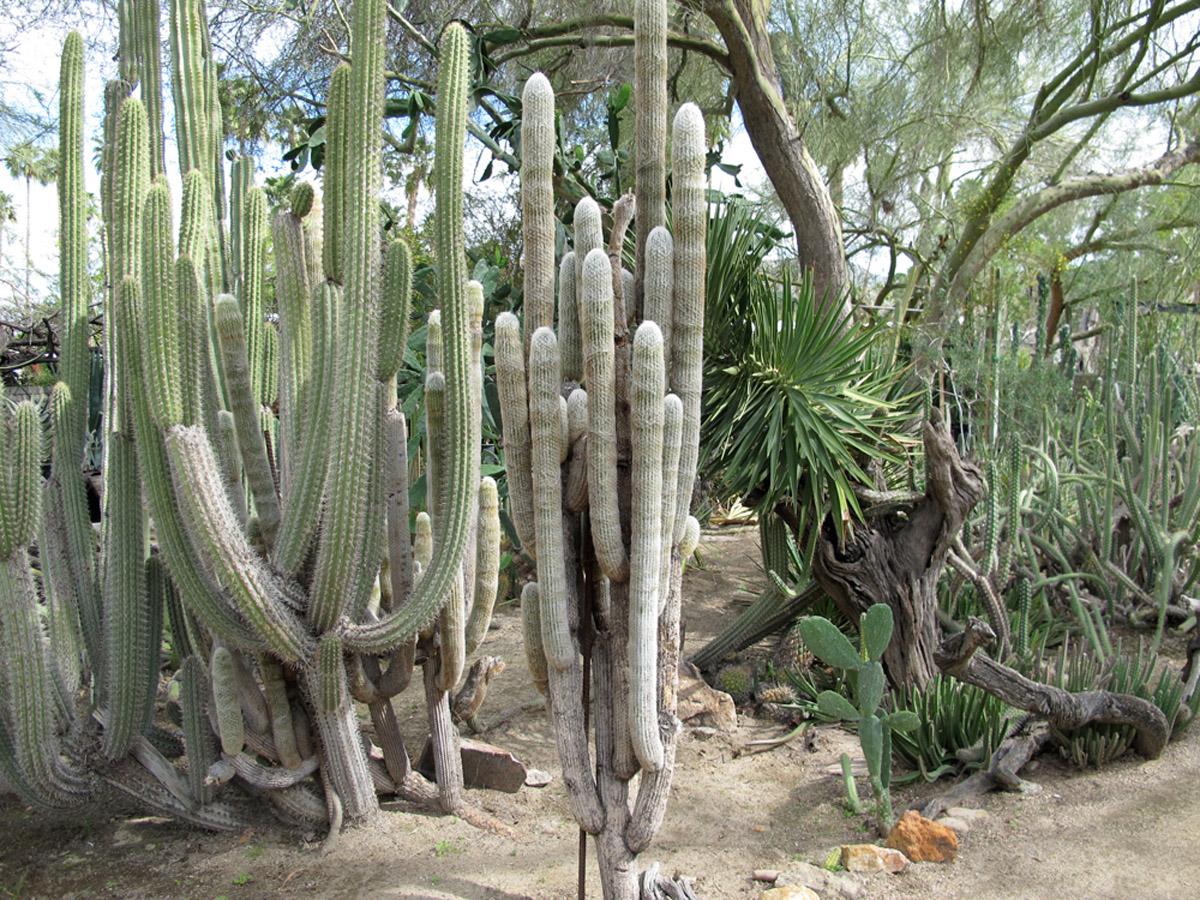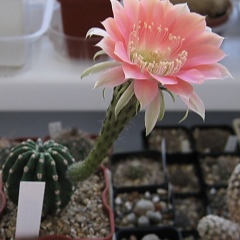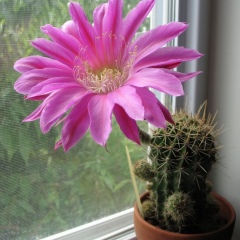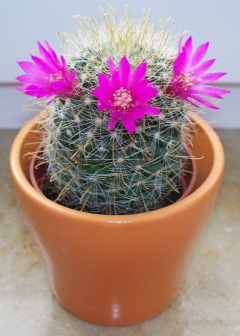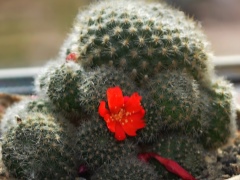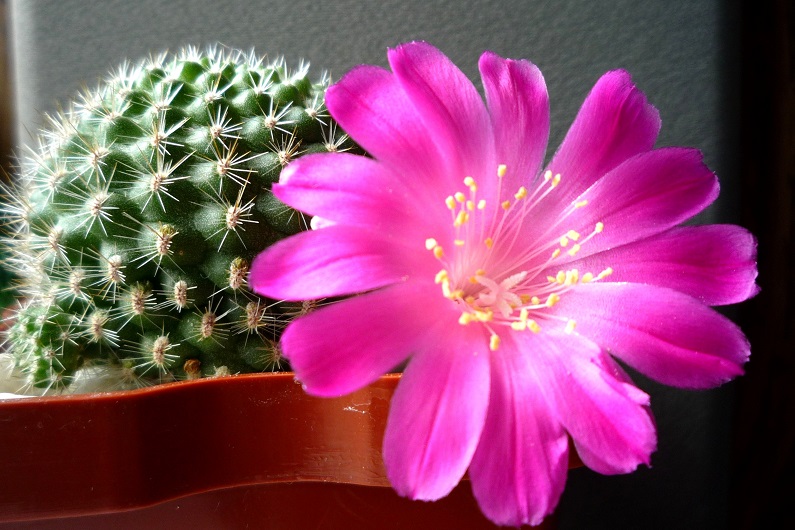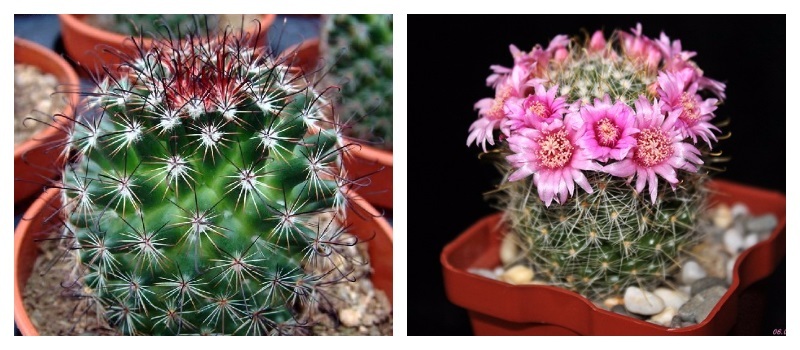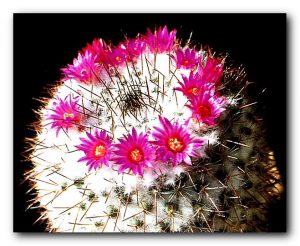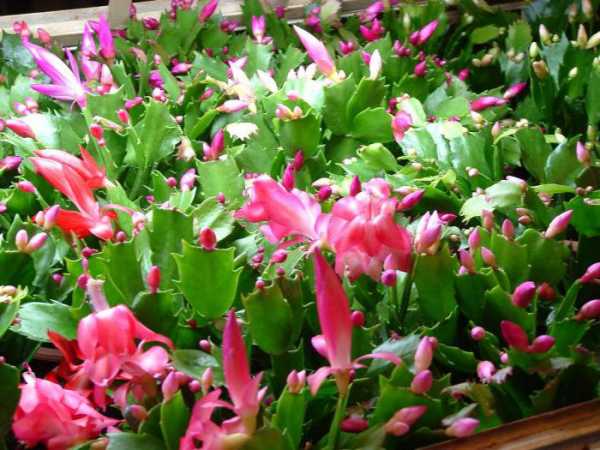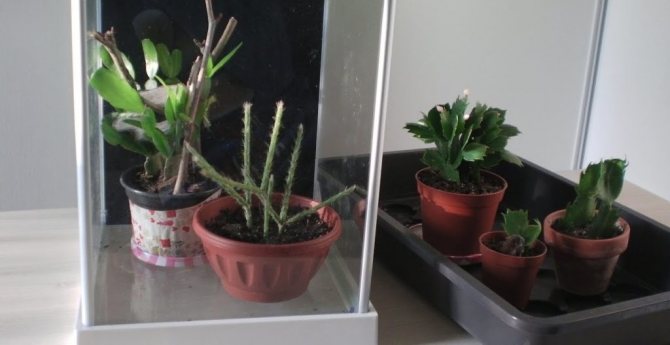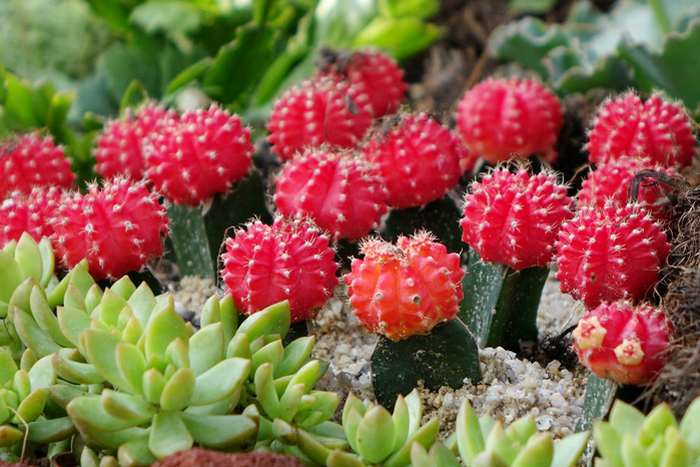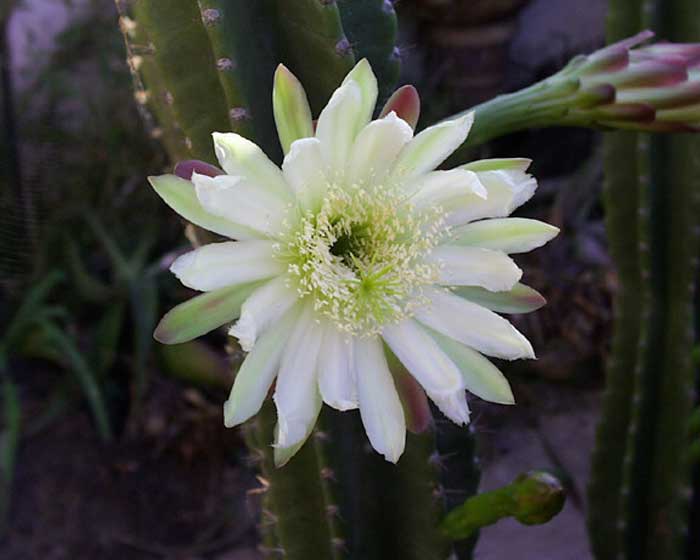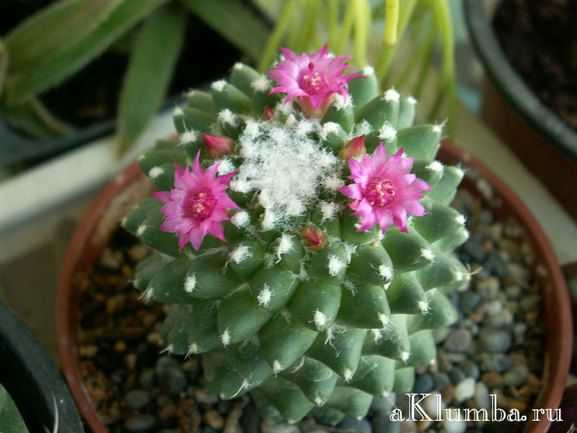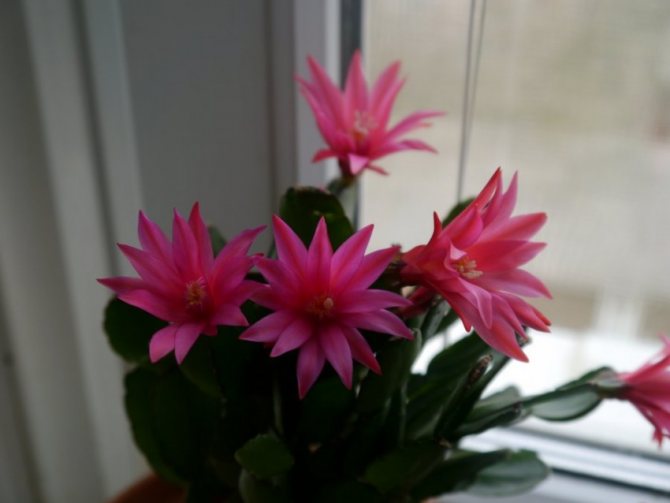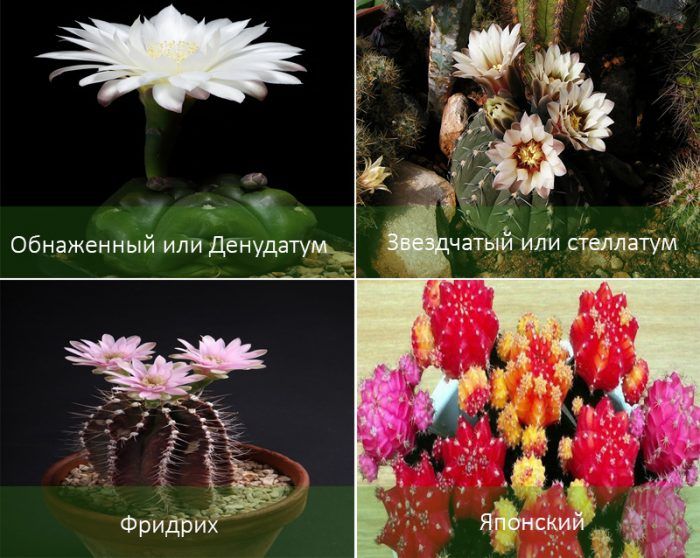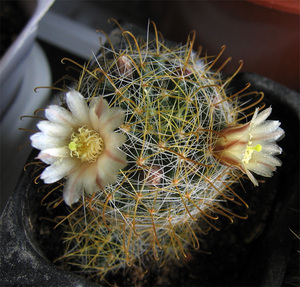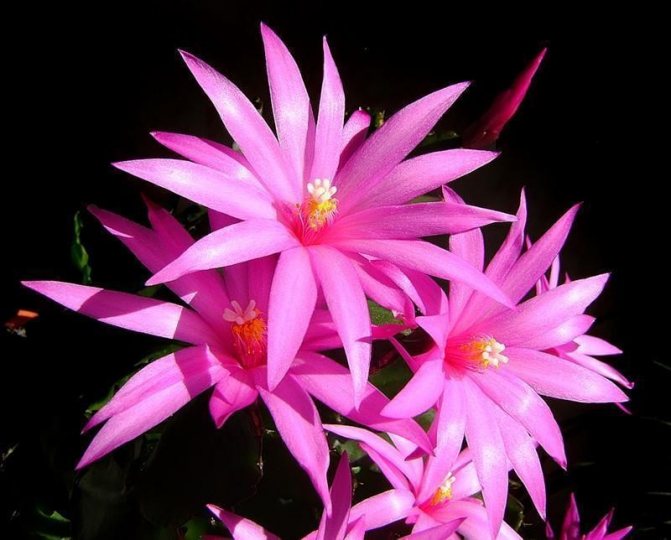The intensity of watering cacti for home care
The intensity of watering cacti in the summer during the growing season is mainly determined by the air temperature and the need for plants in water. It is impossible to give a single recipe for watering - this is a kind of art. In case of insufficient watering, the soil will dry out ahead of time, when overflowing, nutrients necessary for plant growth are removed from the soil. Even with extensive experience in breeding cacti, mistakes cannot be avoided, if only because the soil in pots of different volumes does not dry out at the same time. When the collection is oriented towards the south in the summer months, at high day and night temperatures, one watering per week is usually sufficient, until the full moisture capacity of the soil is used. But this is only a general guideline, and in each case, specific conditions must be taken into account. At the end of summer and autumn, watering is gradually reduced and completely stopped at night temperatures below 15 °. There are genera and species that require constant, moderate watering throughout the season. These include, in particular, Ariocarpus and Roseocactus, Leuchtenbergia, Islayia, Bartshell, Obregonia, Echinomastus, Neogomesia, etc. In any case, by the next watering, the soil in the pots should dry out, but not dry out. It is convenient to check the condition of the soil in pots with a piece of rusty steel wire with a diameter of about 1.5 mm. The wire is carefully stuck in until it drains against the side of the pot. Damp soil leaves wet footprints and small lumps of earth on it.
In addition to watering in warm weather, the collection is regularly sprayed. In the summer they are sprayed 1-2 times a day in the morning and evening hours. It is undesirable to spray in full sun, the water droplets on the stems can work like small lenses and cause burns. In addition, water at this time quickly evaporates, not giving the desired effect. The water for spraying must be soft, otherwise hard water salts will settle on the stems, especially in species with small white thorns, and spoil their appearance.
How to make a cactus bloom at home
Making a cactus bloom is more difficult than any other indoor plant, because it will not be enough to simply increase the amount of nutrients in the soil and wait for the right time of the year.
The first and most effective way is to stress the plant. If you do it correctly and in dosage, the cactus will quickly release new buds. The lack of moisture or nutrients will be a signal for him to urgently create as many seeds as possible for reproduction, because soon, perhaps, the mother plant will die.
The second method is a change of residence and abundant feeding. Due to a slight change in the microclimate, the plant can activate the reproduction process.
The third way is the introduction of special stimulants into the soil. They dissolve in water for irrigation. Not all gardeners consider this method to be safe, so it's best not to experiment with it too often.
Timely transplant
The flowering of a cactus directly depends on how many nutrients and minerals are in the soil. These plants rather quickly "drink" all the elements they need from the soil, so if you forget about regular transplanting, the buds will stop forming.
Correct watering regime
For the appearance of flowers, you need to water the cactus on time. Lack or excess of moisture will lead to rotting of the root system and diseases. Flowering never begins on weakened shoots.
Cacti bloom only when they are watered according to a strictly worked out scheme.The soil should not dry out so that it remains loose enough, and the roots have a constant source of vitality. The optimal watering time for most varieties of cactus is once every 3-5 days.
In order to find the ideal watering time, you need to monitor the degree of drying out of the soil. When the top layer (3 centimeters) is dry, you can irrigate it again.

sunlight
For a cactus to bloom, it needs good lighting. Only an abundance of sunlight can make the bud open. For cacti, you need to choose the lightest corners in the house, preferably from the south side.
Lack of sun leads to the fact that already ripe buds fall off before flowering, and the cactus itself becomes lethargic and withered. The skin gradually becomes thinner, which leads to disease.
Fertilizer
Cactus plants do not need to be fertilized regularly with regular replanting. In their natural habitat, they rarely receive the necessary trace elements in sufficient quantities. At the same time, the gardener can feed the cactus to bloom.
Comfortable wintering
In order for a cactus to bloom at home, it needs to properly spend the winter. If in the cold season the plant cannot go into hibernation due to constant stress, in the spring it will not be able to release buds, because it does not have enough vital energy for this.
For a comfortable wintering, a cactus needs the correct temperature regime (at least 16 degrees), a low level of humidity and rare watering (once a month is enough). Top dressing is removed completely, or reduced to a minimum.
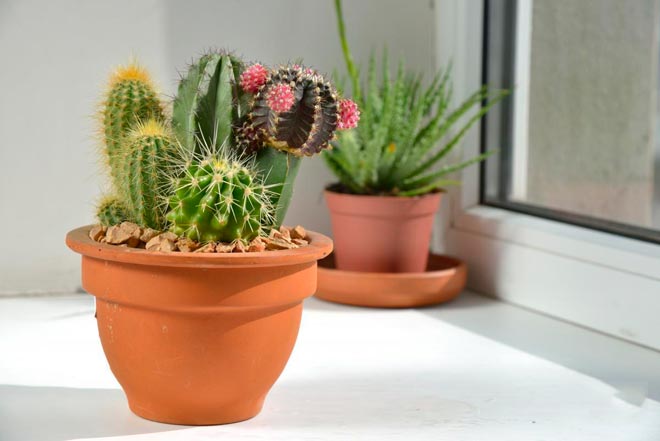
The blooming of a cactus is a spectacle of incredible beauty that boggles the mind. If you properly care for the plant, maintain the necessary microclimate and change the soil in time, it will delight the gardener with its flowers regularly.
What to do to see the blossoming flowers?
To understand why your pet does not bloom, you need to analyze every factor in plant care and find errors in them that should be immediately eliminated.
Flowerpot size
The reason may be too much space. There shouldn't be a lot of it. The pot should be as small as possible. Ideally, the root system should even be a little cramped in its "home". You can not transplant hoya for at least five years.
Lighting
There should be a lot of light all the time. But if you placed a flower on the south side of the room in the summer, make sure that there is an opportunity to shade ivy in the hours of the scorching rays. Use reflective foil or just a sheet of paper for this. Experienced people recommend avoiding open air for this vine.
Proper watering
Rare watering is considered correct. After each moistening of the soil, wait for it to dry completely. This applies to the hot summer period.
But if we talk about the cold season, then in this case you should not rush to watering even after the soil has completely dried out.
Good drying of the soil and root system in winter is the key to the abundant flowering of hoya in summer.
Wintering
At this time of year, you need to give the plant the opportunity to rest and gain strength for the new season. In winter, you need to ensure the following conditions:
- minimal soil moisture;
- reducing feeding to nothing;
- decrease in room temperature to 10-14 degrees above zero.
Substrate
The soil should be loosened, soft, breathable. To properly prepare the soil for wax ivy, take ready-made substrate, peat and sand in equal proportions.
Top dressing
It doesn't have to be frequent in any season. In addition to ready-made complex fertilizers, gardeners recommend feeding the liana with a mullein. Such nutrition will have a positive effect on subsequent flowering.
Age
This factor must be taken into account while waiting for the first flowers from the hoya. After all, young plants will not be able to bloom. A couple of years should pass before this process. Flowering in the first year of "life" is a huge rarity.
"Bathhouse"
This method of making the vine bloom is considered extreme. It is used in cases where all of the above methods do not help to achieve flowers.
What do I need to do?
- In the fall or winter, place the ground part of the ivy in water heated to 35-40 degrees for about half an hour.
- Soil with a root system in the same water - for an hour and a half.
This process activates all life processes of the plant, including flowering.
If the result is not noticeable the first time, you can repeat the procedure, but not earlier than six months later.
How does it bloom?
Depending on the variety, only one flower may appear on a flowering plant, or a large number of them at once.
So, for example, if we talk about such a form as the Pletoid aporocactus, then it forms several buds at once, from which, as a result, pink flowers of medium size with long pointed petals appear. Another species, Otto's notocactus, forms only one bud. One large (up to 8 cm in diameter) yellow flower appears from it.
Also, the size and color of the flowers depends on the species. The epithelanta forms miniature flowers of a pale pink color, sometimes it is difficult to even see them if you do not look closely. Lobivia cactus forms large (about 15 cm in diameter) flowers of various colors - yellow, red, white, pink.
The colors of flowers of various types are all possible. White, red, pink and even brown shades can be seen. The only exceptions are blue and black flowers.
Budding
Budding is a very important process in the life of a cactus, which must be treated with special attention. This is followed by the appearance of long-awaited flowers
At what age do buds appear?
Some varieties of this culture are capable of producing buds already in the first year of life. These include some types of mammillaria.
Rebucias, ailosters and some other plants bloom in the second year. Three years later, you can see the flowering of Echinopsis. Notocactus and astrophytums begin to bloom after four years. All other plants give buds after five years.
Thus, the statement that only adult specimens bloom is erroneous.
Since some varieties grow at an extremely slow rate, buds are often formed on very small specimens.
Therefore, before the end of the dormant period, it is recommended to inspect the plant so that in the future it does not throw off the buds that have appeared.
Cactus buds look different depending on the species. So, for example, in Mammillaria they are naked, while in Echinopsis and Notocactus they are fluffy.
Also, buds can appear from different parts of the plant. If buds of rebutia develop directly from the ground, then in mammillaria they grow from lateral shoots. In others (notocactus, astrophytum), buds appear on the crown of the stem.
How long does it take from the moment the bud appears until it opens?
On average, the bud develops within one month. However, some species begin to bloom after two months (echinopsis).
There are situations when the buds open within a couple of weeks after formation. Discocactus may begin to bloom a day after.
Flowers
At one point, the buds will begin to open. Then you can see the long-awaited flowering of the cactus.
What do they look like?
Flowers are daytime and nighttime, that is, daytime flowers bloom only in the daytime with sufficient light, nighttime flowers do not need light, and they can bloom at night.
Daytime flowers live longer than nighttime ones - up to a week, but on average three days. Nightlife lasts less than two days. Crops with daytime flowers include:
- Mammillaria
- Notocactus
- Rebutia
Echinopsis is a cactus with nocturnal flowers.
Dimensions (edit)
The size of the flowers depends on the type of culture. The diameter can vary from 15 mm to 30 cm. Small-flowered mammillaria have flowers less than 15 mm in diameter.In some representatives of this species, flowers can reach 60 mm.
Rebucius flowers do not exceed 50 mm in diameter. Echinocereus can have very small flowers (up to 25 mm) or very large (about 12 cm). Echinopsis should be especially highlighted. Its flowers are simply enormous - about 15 cm.
As it unfolds and ripens, the flower increases in size.
Coloration
The color of the flower can also change as it ripens. It depends entirely on the type of culture. Night flowers are light shades and white in color.
Most often they are large and have a wonderful aroma. Daytime ones can have a variety of colors: white, red, yellow, green and others.
Blossom crown
All living things need the ability to give life to their descendants. And cacti are no exception. Thus, in order for the pollination process to take place, you need to get a couple for the prickly pet. This will help it bloom regularly.

How to make it bloom?
Getting a cactus to bloom at home is not an easy task. The existing stereotype that succulents are unpretentious plants must be dispelled. If you provoke a cactus, you can make it bloom. Any amateur gardener can do this.
- Choose the right place. The vast majority of cacti need a lot of light. Their natural habitat is the desert, where they roast all day long under the scorching sun. Rhipsalidopsis and epiphyllum belong to forest succulents, being an exception. Partial shade or windows facing the east side of the house are more suitable for them.
- Don't turn the pot. This action can only be carried out in the fall in order to avoid the curvature of the trunk. At other times, it is better not to change the position of the cactus, as this plant gets used to certain insolation. A good solution would be to mark the pots, which will help you always know exactly how the cactus stood.
- Get optimal sleep. In winter, cacti take a rest. At rest, they minimize the processes of photosynthesis. At this time of the year, it is impossible to install additional sources of lighting nearby, but it is better to place the plants altogether in a dark room, not forgetting which side they were facing the light.
- Provide optimum soil moisture. In the summertime, do not water cacti less than once a week. In winter, during a dormant state, frequent watering can lead to root rot. Therefore, in the winter season, you need to water the soil once a month, only slightly moistening it. With the beginning of spring, the procedure for spraying the cactus trunk with hot (about 45-50 ° C) water will be useful.
- Observe the winter temperature regime. Many gardeners think that since a cactus is an exotic plant, it needs year-round heat. This opinion is erroneous, because a period of low temperatures is required for the buds to set. And high temperatures only contribute to the active growth of the trunk. The best solution is to put a cactus on an insulated balcony in winter.
- Top up before flowering. If the plant feels great, then feeding is an optional condition. When other factors affecting the lack of flowering are excluded, then the fertilizer experiment may well be tried. Cacti do not perceive organic matter well, therefore it is recommended to feed them exclusively with minerals. Special fertilizers are common in stores, which should provoke budding. However, many experts consider them to be unsafe.
- If nothing else has worked, transplant the cactus. The last measure of influence on the plant is transplantation. Don't buy a huge pot. Each next dwelling should be one finger larger in diameter than the previous one.

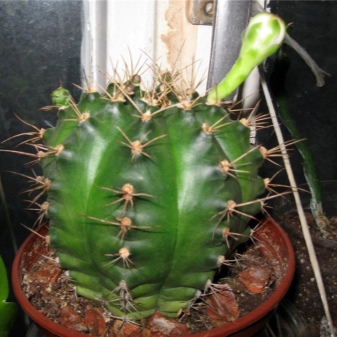
All the conditions for provoking the flowering of cacti are quite feasible. If you systematically move towards your goal, then your dream of seeing a beautiful flower on your pet will definitely come true.When the whole set of methods did not help, you can act on the contrary. Create stressful conditions for the cactus: do not water it a little longer than usual, move it to a new place of residence.
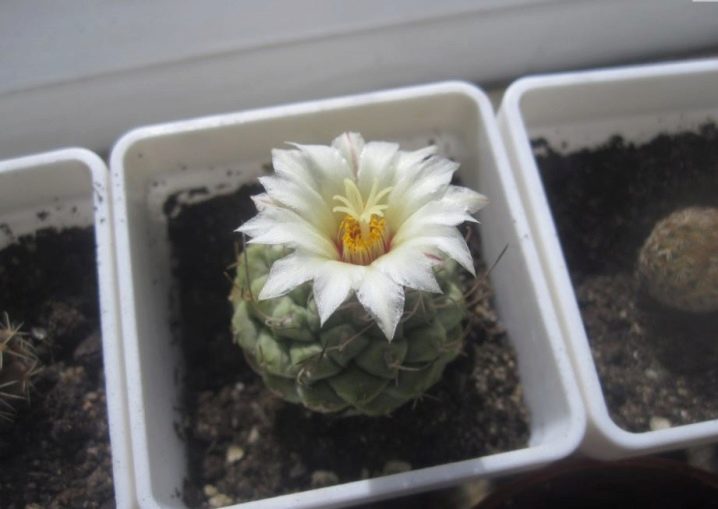
When do cacti bloom at home?
When does this magical event happen, over which all growers tremble? The time at which succulents begin to bloom depends entirely on the alternation of stages of the vegetative cycle, typical for both domestic and wild varieties:
In summer, when they receive maximum heat and sunlight, plants grow intensively and store nutrients.
After the onset of cold weather and a reduction in daylight hours, a period of "hibernation" begins. In the plant world, this manifests itself in the form of a slowdown in biological processes, which allows one to survive unfavorable conditions.
The lengthening of daylight hours gives a start to awakening from hibernation, as a result of which the metabolic processes proceed quite violently, and it is at this time that the budding and flowering of cacti at home occur.
Fine, you say, but then why does not a cactus bloom in a pot, which has been on the windowsill for many years? After all, winter replaces summer in every climatic and time zone, and if every succulent is capable of flowering, then they should all bloom together in spring. Not everything is so simple, and the very fact of the change of seasons is not enough to alternate the stages of the growing season. Plants, adapted to survive in extremely unfavorable places, turn out to be very capricious in the matter of flowering, and require observance of certain rules.
In pursuit of the coveted buds, flower growers groom and cherish their pet, creating ideal, in their opinion, conditions. Comfortable temperature, perfect lighting, proper watering and systematic feeding. The cactus clearly feels good, grows quickly, but is in no hurry to bloom at all.
The mistake is that complete comfort is the reproduction of only one life stage, and their alternation is necessary, reproducing the natural conditions of existence. Thus, the main thing that needs to be done for a cactus to bloom is to stop pampering it, bringing the content as close as possible to the program laid down by nature.

How often?
There is a legend that after flowering the cactus dies. However, this is only possible with the wrong content. And it does not depend at all on flowering.
In fact, a cactus can bloom annually. Some species bloom less often or there is no flowering at all, no matter how hard you put in it.
How many times during a life a cactus bears fruit
Some may be surprised at the question of the fruiting of cacti, believing that they are only blooming. However, the inhabitants of South America and Africa use the fruits of cacti in their daily diet. All their parts are eaten: stems, seeds and fruits. In total, there are more than 170 species of fruiting cacti.
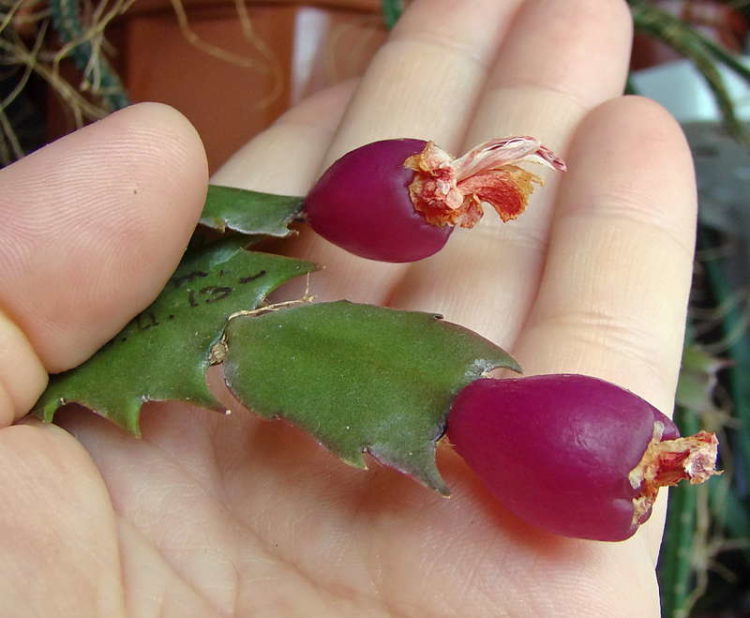
The fruits of the Decembrist
For example, on the Rozhdestvennik zygocactus a month after flowering, if pollination has occurred, green fruits may appear.
It should be noted! Pollination is very difficult to get if they are Decembrists of the same color. If there are zygocactus of different colors nearby, pollination is most likely.
Ripening occurs within 5-7 months. The fruits turn into juicy bright ruby berries. The taste of berries with sourness, there are small seeds inside.
Fruiting is a cactus with the botanical name Hilocereus, or Dragon's Heart, as it is popularly called. It bears fruit from May to November, producing up to 6 crops per season. Hilocereus fruits weigh between 150 grams and 1 kilogram.
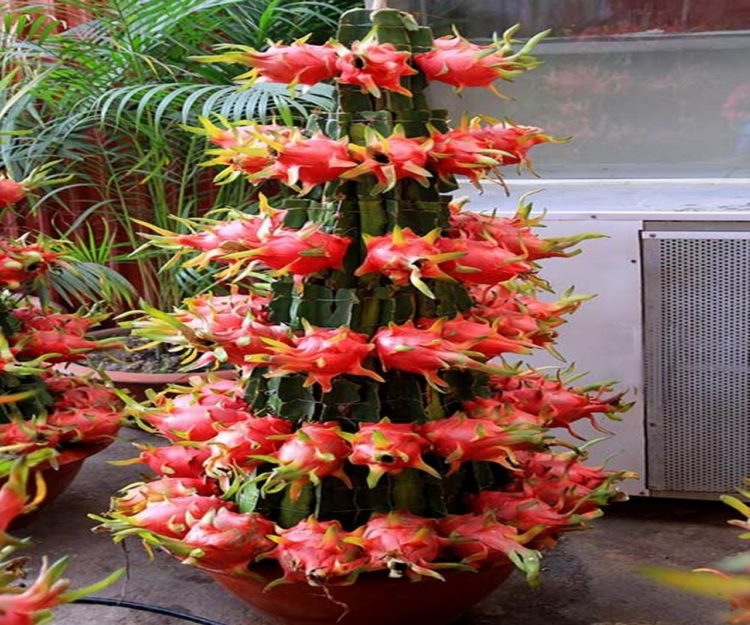
Dragon heart
No less well-known is a variety of cactus called yellow Pitaihaya. It is juicy and has a delicate taste. Pitaihaya is popularly called the Queen of the Night. Its main supplier is Colombia. In appearance, the Queen of the Night is a simple indoor cactus, but it is unusual in that its flowers bloom at night and wither by morning.Many botanical gardens offer special night tours for those wishing to see the Pitaihaya bloom.
Flowering species
All types of cacti begin to bloom sooner or later, but most often the buds bloom in the following species.
Mammillaria
A plant with a spherical or cylindrical stem of a greenish-silvery shade, up to 25 cm high. A characteristic feature is white thin threads connecting the thorns. Flowering time - spring, flowers (up to 2 cm in diameter) pink or lilac are arranged in a ring around the top of the stem.
Echinopsis
A plant with a green spherical or cylindrical stem, powerful ribs and short spines. Red, white, pink flowers grow on a pubescent tube, can have a diameter of 14 - 20 cm. They bloom at night, emitting a wonderful aroma. Flowering time - spring - autumn.
Cereus
The stem is columnar in shape with pronounced ribs and has a height of up to 1 m. Depending on the variety, it can be smooth or with spiny needles. Flowering time - summer, flower length can reach 15 cm, color - white. Some varieties of Cereus bloom during the day, others at night.
Astrophytum
The stem is spherical or elongated, it can be covered with long curly needles, or it can remain smooth (it all depends on the variety). The flowers are white and yellow, blooming in spring and summer.
Rebutia
A plant with a rounded fleshy stem, covered with spiral ribs and short, hard spines. Flowers of cream, pink, purple color have elongated tubes of glossy fused petals. Their diameter is about 2.5 cm.
You will find a description and photo of all types of flowering cacti in another article.
Transplant when caring for cacti at home
The growing season is also the time for transplanting cacti for home care. Depending on the composition of the soil, the frequency of replanting cacti has a different duration. It is highly undesirable to bring the soil to complete depletion. Plants will not only grow poorly, but also give ugly growths.
For plants transplanted in late summer - early autumn and later, the current growth has already been completed or is at the stage of completion. They tolerate transplanting well and take root, and in the next season they give a full increase. In addition, transplanting is possible in early spring. My own experience of transplanting hundreds of plants in the early spring period before the start of the growing season (March) also showed very good results. The transplantation stimulated the awakening of plants, they quickly filled up and started to grow, fully used the growing season. There were no losses among healthy transplanted cacti.
Next, you will learn how to transplant cacti at home.


